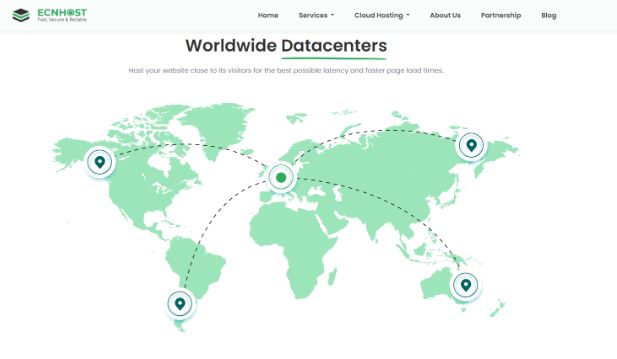Full Stack Development is an exciting and dynamic field that deals with a variety of techstacks and programming languages. This domain offers a wide range of opportunities for those who want to explore this world. However, due to the large options of tech stacks present to choose from, one of the biggest challenges faced by developers is choosing the right technologies for Full-Stack Development.
If you are stuck in any such dilemma, you have reached the right place. In this article, we’ll explore the key considerations that you must keep in mind before choosing the right technology for your full-stack development journey. Additionally, we will also try to understand why enrolling in the Best Full stack development courses in Ahmedabad, Bangalore, Pune, Delhi, Mumbai, Gandhinagar, and other cities across India can be a good choice for you.
The Importance of Choosing the Right Technologies
If we have an abundance of technologies and tech stacks present to choose from, why can’t we pick any one of them that we like? This is because each stack serves a certain use case. Using the appropriate technologies is like picking the right tools for a job. This choice can significantly impact your productivity, the quality of your work, and your career prospects. Let us understand why making the right choices is important:
- Relevance and Market Demand: Technology trends change as quickly as the blink of an eye. What is popular today might become obsolete in a year or a few months. To ensure your skills remain relevant, it is essential to choose technologies that are in demand in the job market. You should consider choosing the technology that is used widely in the market.
- Project Requirements: Different projects require different technologies. For instance, a web development project may involve HTML, CSS, JavaScript, and front-end frameworks like React or Angular, whereas a backend may require Node.js, Python, Ruby on Rails, or PHP. Understanding the specific needs of your project is important. Once you know what your project needs, half of the choice will become clear.
- Ease of Learning: Some technologies are easier to learn than others. Your choice might depend on your current level of expertise and the time you can allocate to learning.
- Interoperability: You should always try picking the technologies that can work well together. For instance, if you are using a JavaScript front-end framework, it is often a good idea to use a backend technology that complements it.
- Scalability: Before making a final decision, consider whether the technology that you are planning to choose can scale as your project grows. What works for a small startup may not be suitable for a large enterprise.
The Choice of Technology
Now, that we have an idea about the points that should be kept in mind while making a decision, let us delve into the key technologies that you can consider:
Front-End Technologies
- HTML/CSS: These two tools are the building blocks of web development. HTML structures your web content whereas CSS styles it.
- JavaScript: JavaScript is the primary language for adding interactivity and functionality to web pages. You must familiarise yourself with the JavaScript ecosystem, including ES6, which is the latest version of JavaScript.
- Front-End Frameworks: Popular choices of front-end frameworks include React, Angular, and Vue.js. These frameworks simplify front-end development and offer tools for building dynamic, single-page applications.
Back-End Technologies
- Server-Side Languages: Technologies like Node.js, Python, Ruby on Rails, PHP, and Java are commonly used for server-side development. Your final choice will depend on factors like project requirements and personal preference.
- Databases: You’ll need to store and manage data, and there are two primary types: SQL (e.g., MySQL, PostgreSQL) and NoSQL (e.g., MongoDB, Cassandra). This choice will depend on your project’s data structure and scalability needs. We will have a more detailed view of the database choice in the later parts of this article.
- Server Environments: Technologies like Express.js (Node.js), Django (Python), Ruby on Rails, or Spring Boot (Java) provide a framework for building robust server applications.
Databases
- SQL Databases: SQL databases are structured and highly reliable. This makes them a good choice for applications that require complex querying and data integrity.
- NoSQL Databases: These databases, like MongoDB or Cassandra, are better for applications that need to handle large amounts of unstructured data or require fast, flexible data storage.
Hence, you must finalize the database only when you have a clear idea about your project and the data structure that your project has.
Version Control
Git: Git is one of the most essential tools for tracking changes in your code, collaborating with others, and ensuring a stable codebase. Having a good knowledge of git is also essential for your development journey.
DevOps and Deployment
- Containerization and Orchestration: Tools like Docker and Kubernetes have become very popular in the tech world these days. They allow you to package and deploy applications consistently across different environments.
- Cloud Services: Cloud services have evolved the way things are done by cutting costs and increasing efficiency significantly. Platforms like Amazon Web Services (AWS), Microsoft Azure, and Google Cloud provide scalable and cost-effective hosting solutions.
Also Read-How Does Machine Learning Help Businesses?
The Importance of Relevant Courses
We have covered a vast range of technologies and hence we can agree that learning all of them in a structured way is quite impossible individually. Hence, enrolling in a Full Stack Development course can be immensely beneficial to provide you with the right direction. These courses offer structured learning paths, hands-on experience, and insights into industry best practices. For those looking to gain comprehensive skills, Full-Stack Development Courses provide an excellent starting point. They cover both front-end and back-end technologies, databases, version control, and DevOps, ensuring you are well-prepared for a dynamic career in Full Stack Development.
Moreover, if you have gone through this informative article, you would have noticed that Python is present in more than one tool in back-end development. Therefore, you must also consider enrolling in the Best Python Certification Courses in Ahmedabad, Bangalore, Pune, Delhi, Mumbai, Gandhinagar, and other cities across India can be particularly advantageous. Python is not only a versatile language for web development but is also widely used for several back-end tasks.
Conclusion
Full-Stack development is a dynamic field that requires a comprehensive understanding of both front-end and back-end technologies. With a wide array of tools, technologies, and frameworks present to choose from, you must make a rational choice for the success of your project. Once you have a clear idea about the tech stack that you want to go ahead with, enroll in a relevant course so that you get a complete edge on the technology. By following these steps, you will be ready to fly high in the world of Full-Stack development.



